 W
WThe black panther, also known as the Carantanian panther after the Medieval principality of Carantania, is a Carinthian historical symbol, which represents a stylized heraldic panther. As a heraldic symbol, it appeared on the coat of arms of the Carinthian Duke Herman II as well as of the Styrian Margrave Ottokar III. In this region it was most frequently imaged on various monuments and tombstones. The symbol can still be found in the coat of arms of the Austrian state of Styria, although the colours have changed. The symbol is also widely used within structures of the Slovenian security forces; namely by the Slovenian Armed Forces and the Slovenian Police. Since 1991, there have been several proposals to replace the Slovenian coat of arms with the black panther.
 W
WCarantania, also known as Carentania, was a Slavic principality that emerged in the second half of the 7th century, in the territory of present-day southern Austria and north-eastern Slovenia. It was the predecessor of the March of Carinthia, created within the Carolingian Empire in 889.
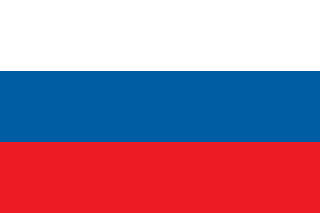 W
WThe Duchy of Carniola was an imperial estate of the Holy Roman Empire, established under Habsburg rule on the territory of the former East Frankish March of Carniola in 1364. A hereditary land of the Habsburg Monarchy, it became a constituent land of the Austrian Empire in 1804 and part of the Kingdom of Illyria until 1849. A separate crown land from 1849, it was incorporated into the Cisleithanian territories of Austria-Hungary from 1867 until the state's dissolution in 1918. Its capital was Ljubljana.
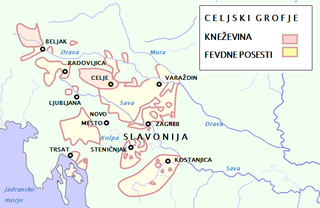 W
WThe County of Cilli was a Medieval county in the territory of the present-day Slovenia. It was governed by the Counts of Cilli.
 W
WThe Counts of Celje or the Counts of Cilli were the most influential late medieval noble dynasty on the territory of present-day Slovenia. Risen as vassals of the Habsburg dukes of Styria in the early 14th century, they ruled the County of Cilli as immediate counts (Reichsgrafen) from 1341 and rose to Princes of the Holy Roman Empire in 1436.
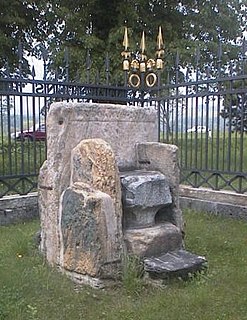 W
WThe Duke's Chair, also known as the Duke's Seat, is a medieval stone seat dating from the ninth century and located at the Zollfeld plain near Maria Saal north of Klagenfurt in the Austrian state of Carinthia.
 W
WGreat Moravia, the Great Moravian Empire, or simply Moravia, was the first major state that was predominantly West Slavic to emerge in the area of Central Europe, chiefly on what is now the territory of the Czech Republic, Slovakia, Poland, Hungary. The only formation preceding it in these territories was Samo's tribal union known from between 631 and 658 AD. Great Moravia was thus the first joint state of the Slavic tribes that became later known as Czechs,Slovaks and Moravians and that later formed Czechoslovakia.
 W
WLower Pannonia was an early medieval region, located in the eastern and southern parts of the former Roman province of Pannonia. Division of Pannonia in two main parts was inherited from the Roman terminology, and during the 9th century, the term Lower Pannonia was used to designate those Pannonian regions that were lying from the river Rába to the east and south. From the middle of the 6th to the end of the 8th century, the region was under the domination of Avars, and also inhabited by Slavs, who were under Avarian rule. By the beginning of the 9th century, Avarian state was destroyed and replaced by the supreme rule of the Frankish Empire, which lasted until Magyar conquest.
 W
WThe March of Carinthia was a frontier district (march) of the Carolingian Empire created in 889. Before it was a march, it had been a principality or duchy ruled by native-born Slavic princes at first independently and then under Bavarian and subsequently Frankish suzerainty. The realm was divided into counties which, after the succession of the Carinthian duke to the East Frankish throne, were united in the hands of a single authority. When the march of Carinthia was raised into a Duchy in 976, a new Carinthian march was created. It became the later March of Styria.
 W
WThe March of Carniola was a southeastern state of the Holy Roman Empire in the High Middle Ages, the predecessor of the Duchy of Carniola. It corresponded roughly to the central Carniolan region of present-day Slovenia. At the time of its creation, the march served as a frontier defense against the Kingdoms of Hungary and Croatia.
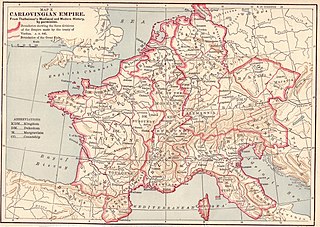 W
WThe March of Friuli was a Carolingian frontier march, established in 776 as the continuation of the Lombard Duchy of Friuli, established against the Slavs and Avars. It was ceded to the Duchy of Bavaria as the March of Verona in 952. Its territory comprised parts of modern-day Italy, Slovenia and Croatia.
 W
WThe March of Istria was originally a Carolingian frontier march covering the Istrian peninsula and surrounding territory conquered by Charlemagne's son Pepin of Italy in 789. After 1364, it was the name of the Istrian province of the Habsburg Monarchy, the Austrian Empire and Austria-Hungary.
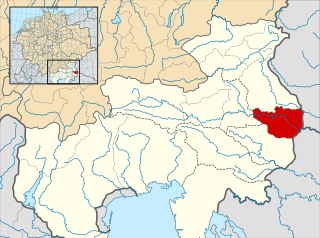 W
WThe Mark an der Drau was a historical territory of the Holy Roman Empire and its predecessors during the Middle Ages. It came into being during the second half of the 10th century, covering an area from the eastern border of the Carolingian Carantanian Gaugrafschaft of Jauntal to Pettau in the territory of Friedau (Ormož). After 1147 it was attached to the Mark an der Mur forming the March of Styria/Carantania, which later gave rise to the Duchy of Styria. Other designations for the territory include Mark Pettau, Mark hinter dem Drauwald, Grafschaft hinter dem Drauwald, Marchia transsilvana/transsylvana, Pitouiensis, and untere Karantaner Mark.
 W
WThe Mark an der Sann was a border march of the Holy Roman Empire, in the territory of present-day Slovenia. It was established in the second half of the 10th century to protect the Empire against its enemies to the east, especially from Hungarian raids.
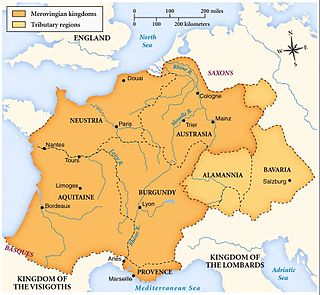 W
WThe Merovingian dynasty was the ruling family of the Franks from the middle of the 5th century until 751. They first appear as "Kings of the Franks" in the Roman army of northern Gaul. By 509 they had united all the Franks and northern Gaulish Romans under their rule. They conquered most of Gaul, defeating the Visigoths (507) and the Burgundians (534), and also extended their rule into Raetia (537). In Germania, the Alemanni, Bavarii and Saxons accepted their lordship. The Merovingian realm was the largest and most powerful of the states of western Europe following the breaking up of the empire of Theoderic the Great.
 W
WThe Merovingian dynasty was the ruling family of the Franks from the middle of the 5th century until 751. They first appear as "Kings of the Franks" in the Roman army of northern Gaul. By 509 they had united all the Franks and northern Gaulish Romans under their rule. They conquered most of Gaul, defeating the Visigoths (507) and the Burgundians (534), and also extended their rule into Raetia (537). In Germania, the Alemanni, Bavarii and Saxons accepted their lordship. The Merovingian realm was the largest and most powerful of the states of western Europe following the breaking up of the empire of Theoderic the Great.
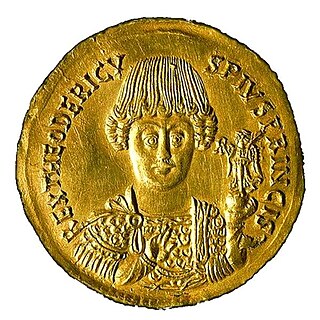 W
WThe Ostrogothic Kingdom, officially the Kingdom of Italy, was established by the Germanic Ostrogoths in Italy and neighbouring areas from 493 to 553.
Pribina was a Slavic prince whose adventurous career, recorded in the Conversion of the Bavarians and the Carantanians, illustrates the political volatility of the Franco–Slavic frontiers of his time. Pribina was the first ruler of Slavic origin to build a Christian church on Slavic territory in Nitra, and also the first to accept baptism.
 W
WThe Prince's Stone is the reversed base of an ancient Ionic column that played an important role in the ceremony surrounding the installation of the princes of Carantania in the Early Middle Ages. After the incorporation into the Frankish Empire the procedure held in Slovene was continued as the first part of the coronation of the Dukes of Carinthia, followed by a mass at Maria Saal cathedral and the installation at the Duke's chair, where he swore an oath in German and received the homage of the estates.
 W
WThe Principality of Lower Pannonia, also known as the Balaton Principality, was an early medieval Slavic polity, situated in Lower Pannonia, with capital in Blatnograd. The polity was a vassal principality of the Frankish Empire, or according to others, a frontier county of the Eastern Frankish Kingdom. It was initially led by a dux (Pribina) and later by a comes (Kocel, Pribina's son, who was titled as "Count of the Slavs" .. It was one of the early Slavic polities, that emerged during the early medieval period. It was centered in western regions of modern Hungary, but also included some parts of modern Austria, Slovenia, Croatia and Serbia.
 W
WSamo founded the first recorded political union of Slavic tribes, known as Samo's Empire, stretching from Silesia to present-day Slovenia, ruling from 623 until his death in 658. According to Fredegarius, the only contemporary source, Samo was a Frankish merchant who unified several Slavic tribes against robber raids and violence by nearby settled Avars, showing such bravery and command skills in battle that he was elected as the "Slavic king". In 631, Samo successfully defended his realm against the Frankish Kingdom in the three-day Battle of Wogastisburg.
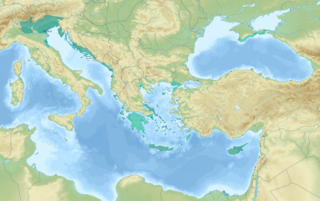 W
WThe Republic of Venice or Venetian Republic, traditionally known as La Serenissima, was a sovereign state and maritime republic in parts of present-day Italy which existed from 697 AD until 1797 AD. Centered on the lagoon communities of the prosperous city of Venice, it incorporated numerous overseas possessions in modern Croatia, Slovenia, Montenegro, Greece, Albania and Cyprus. The republic grew into a trading power during the Middle Ages and strengthened this position in the Renaissance. Citizens spoke the still-surviving Venetian language, although publishing in (Florentine) Italian became the norm during the Renaissance.
 W
WThe Windic March was a medieval frontier march of the Holy Roman Empire, roughly corresponding to the Lower Carniola (Dolenjska) region in present-day Slovenia. In Slovenian historiography, it is known as Slovene March.